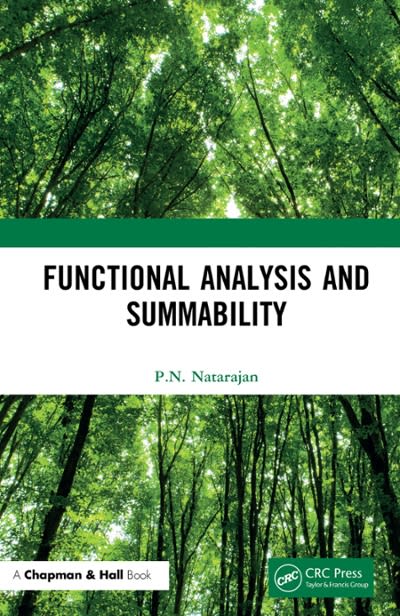Question
The Project will explore the concept of families of solutions, and how equation parameters can change not just the value, but also the number and
The Project will explore the concept of "families" of solutions, and how equation parameters can change not just the value, but also the number and types of solutions. This analysis of parameters is also related to statistical processes such as Sensitivity Analysis, or numerical solutions in Perturbation Theory.
Usually when we talk about Parametric Equations we mean two functions that share a common input, allowing use to "parametrize" a system of equations based on a single variable. But all the components of those equations, such as coefficients or exponents, are themselves numbers. If we change one of those components, does the solution change? Does it change a little, or a lot? Does the solution even exist anymore, or has it disappeared completely?
Consider the equation x2 - c = 0. This has two (real) solutions when c is positive. But the two solutions get closer together as c gets closer to zero, and become the same (double root) solution when c is zero. If c is negative, there are no (real) solutions (or two imaginary solutions).
Now consider the polar equation:
r= 1/1+
What does the graph of this equation look like for different values of A? Are the graphs always the same, like a quadratic is always a parabola, or do they change? What do the graphs look like nearby these "critical points" (lim A c) or very far away (lim A )? What does the "family" of possible solutions look like?
Step by Step Solution
There are 3 Steps involved in it
Step: 1

Get Instant Access to Expert-Tailored Solutions
See step-by-step solutions with expert insights and AI powered tools for academic success
Step: 2

Step: 3

Ace Your Homework with AI
Get the answers you need in no time with our AI-driven, step-by-step assistance
Get Started


